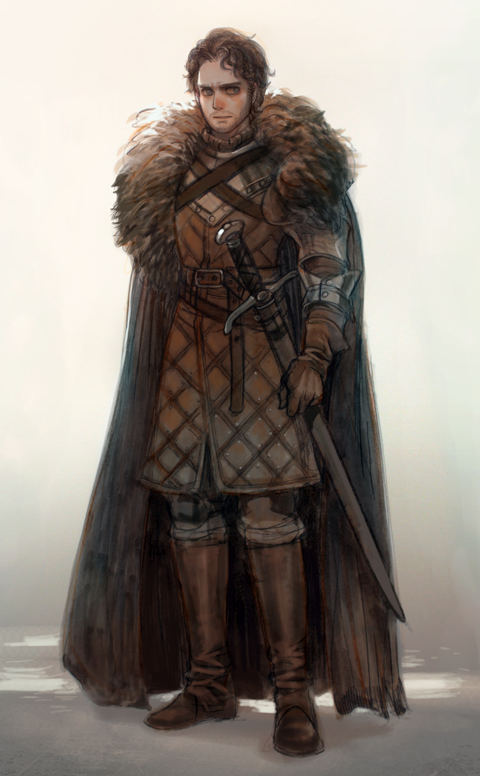Lord of the Cold [Training, PM for Entry]
Mar 9, 2015 17:40:40 GMT -7
Post by Lord of Cold on Mar 9, 2015 17:40:40 GMT -7
Lore, Animal (Arctic
Rank: "E"
Skill: Skill
Effect: This skill enables a character to observe the actions or habitat of an animal and interpret what is going on as well as identifying said animal.
Special: ---
Drawback: ---
Description: Actions can show how dangerous the creature is, whether it is hungry, protecting its young, or defending a nearby den. Furthermore, careful observation of signs and behaviors can even indicate the location of a water hole, animal herds, predators, or impending danger, such as a forest fire. A successful check means the character understands the basic actions of the creature, as well as the type of creature it is. A character may also imitate the calls and cries of animals that he is reasonably familiar with, based on the knowledge (user must learn per Region). This ability is limited by volume. A successful check means that only Chakra means can distinguish the character's call from that of a true animal. The cry is sufficient to fool animals, perhaps frightening them away or luring them closer. When learning the user must choose per Region and they may only have knowledge of Animals creatures. Each Skill level allows the user knowledge of each Animal category (Example: Novice can identify Common Animals, Master can identify Nearly Impossible Animals) within a region. Each time learned user gets 5 die roll to increase the skill.
Limit: ---
Rank: "E"
Skill: Skill
Effect: This skill enables a character to observe the actions or habitat of an animal and interpret what is going on as well as identifying said animal.
Special: ---
Drawback: ---
Description: Actions can show how dangerous the creature is, whether it is hungry, protecting its young, or defending a nearby den. Furthermore, careful observation of signs and behaviors can even indicate the location of a water hole, animal herds, predators, or impending danger, such as a forest fire. A successful check means the character understands the basic actions of the creature, as well as the type of creature it is. A character may also imitate the calls and cries of animals that he is reasonably familiar with, based on the knowledge (user must learn per Region). This ability is limited by volume. A successful check means that only Chakra means can distinguish the character's call from that of a true animal. The cry is sufficient to fool animals, perhaps frightening them away or luring them closer. When learning the user must choose per Region and they may only have knowledge of Animals creatures. Each Skill level allows the user knowledge of each Animal category (Example: Novice can identify Common Animals, Master can identify Nearly Impossible Animals) within a region. Each time learned user gets 5 die roll to increase the skill.
Limit: ---
0|5 TP
0 SP
The weather was certainly warming, and the endless night was once again ending. The arctic cold was receding, and some of the less terrifying of lifeforms were moving back into the realm of the living, become more and more active. I had put my axe down for an hour, to walk the village, and listen to the sounds of nature in one of the parks. The thing about parks in Yukigakure, is they aren't really parks. During summer they are for grazing the animals that some people keep, and during winter, spring and fall, it is barren tundra, with an occasional stray animal, a handful of trees which hardly seem to be enjoying their lives, and of course, the birds which naturally accompany any area. It was them I wanted to see.Strong strides would waste only five minutes getting to a nice little aclove within a group of trees. I sat down there, and then reclined all the way, although I was painfully aware of how thecold was seeping into my bones by way of the dirt below me. I looked up, observing the tree above me, and immediately noticed a white blob, sitting in the tree far above me. It was obviously a bird, but I had to wrack my brains, try very hard, to recall the tiny piece of information that was its name. It was a nocturnal bird, native predominately to these colder climes, and it had the appropriate name for such a thing too. It had a name that had to do with the tundra which it lives in. I am sure, certainly, of that much of the thing.I noticed also that it had grey spots. The bird was halfway in between the dark, black colored spots which it has for one season, and the lighter, purely white coloration which it takes on for winter. It took me a while to figure out that it was the same bird both times, but after a couple of encounters with the beast between seasons, I figured it out pretty darn well. The tricky part of the coloration was for a combination of camouflage and attraction of mates. Its a tricky business, for a bird too showy will scare off its prey and no longer be able to use stealth to its advantage, but a bird too homely will lose the love of its female equivalents, and thereby no more of that bird will ever exist. The Snowy Owl walks that line just perfectly, as far as I can see it that is. The Snowy Owl, finally hit me in the head. That was the name of this bird. The nocturnal predator of the northern tundra, sleeping in a barren tree in the park. What a sad sight. But, I realized quickly that all beasts must sleep sometime, and sleeping during the day is the direct cost of being the terror of the nights for mice and voles and other creatures.








